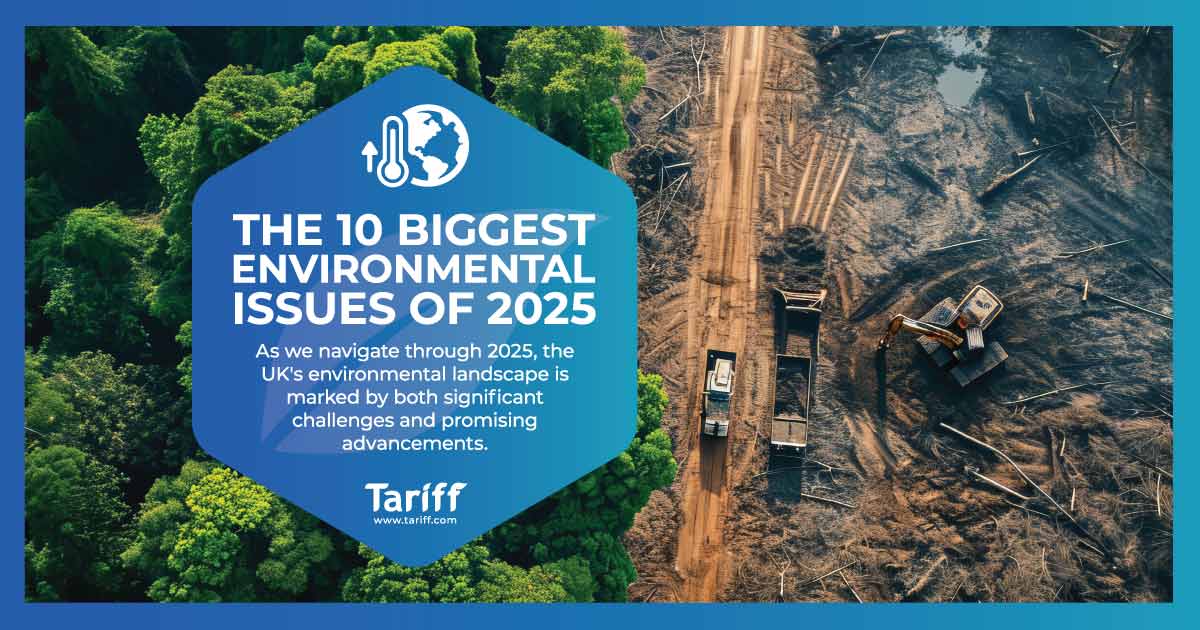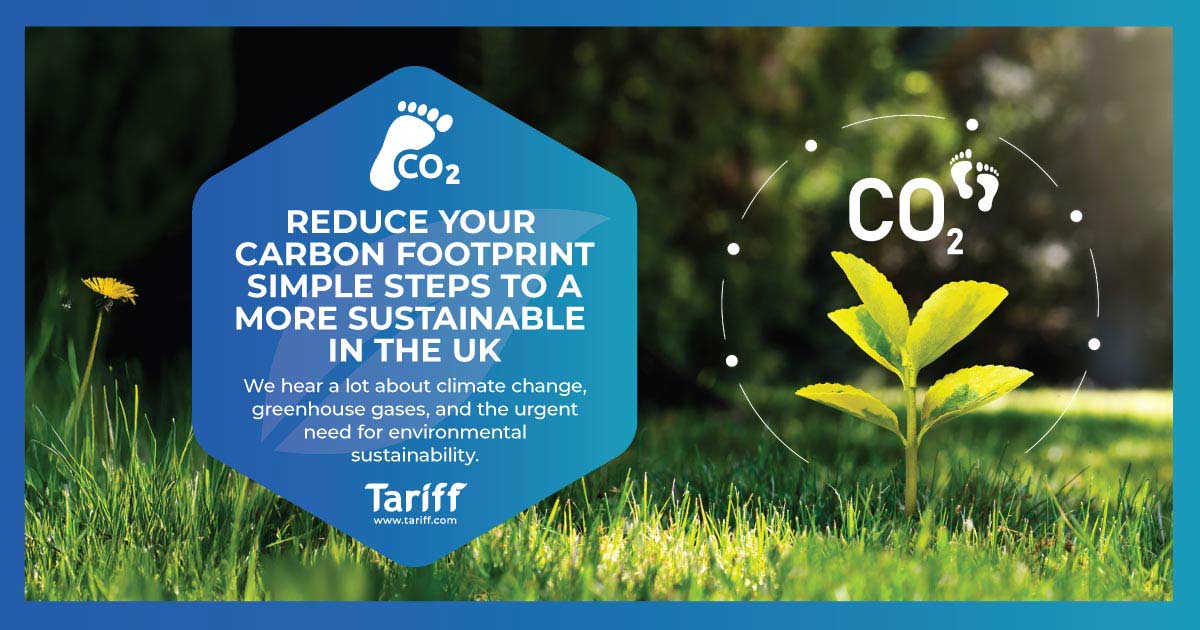The 15 Most Polluted Areas In The UK
Pollution is a unique and ongoing menace to our planet. From plastic garbage patches stretching for thousands of miles in our oceans, to poisonous fumes billowing out of factories and industrial facilities, the impacts of pollution are felt across the globe.
The dire effects this has on peoples, towns, cities, and greenery are well-documented, and sadly, are experienced by so many across the world. Those exposed will suffer health implications such as persistent coughing, wheezing, and shortness of breath, while more serious long-term risks may include lung cancer, heart conditions, strokes and even dementia. Then there’s the damage to natural ecosystems, with wildlife poisoned and food chains disrupted by harmful pollutants.
In recent decades, the UK has taken important steps to combat pollution, and has seen some success, with figures gradually falling year-by-year. Still, the threat posed by this evolving threat is not to be underestimated. With the risks involved, many residents would certainly prefer to live in cleaner and greener places, and might take this into account when looking to move homes or towns.
Therefore, in Tariff’s latest blog, we’ll explore which areas of the UK are among the most polluted, perhaps best avoided for those concerned with their health or the environment. We’ll do this by measuring and comparing the air quality figures across the nation, ensuring a comprehensive analysis and a robust ranking of the locations beset by the worst air pollution in the UK.
How Did We Collect Our Data?
Tariff is committed to transparent and objective reporting of the facts, and as such, we take great care to outline our sources and ensure our readers know where this information is derived from. In line with this commitment, our data was retrieved from IQAir, which measures air quality from over 80,000 live data points across the world. This index not only covers Europe, but encompasses a broad range of areas across the UK, from Newquay on Cornwall’s coast to Inverness in the heart of Scotland’s northern highlands.
Therefore, such a well-rounded dataset makes for the ideal outlet to assess air quality across the entire country, and put together our comprehensive ranking. The data thus used to assess air quality is PM2.5 concentration, or µg/m³, which measures how much particulate matter is found in one cubic meter of air. While PM10 concentration can also be used to measure air quality, we chose to stick to the finer, smaller particular matter that PM2.5 is more suited for.
For each location, we noted down monthly air quality measurements across the year of 2023. From there, we calculated the average figure from those measurements, which gave us our 15 rankings. We also noted down the highest measurement at each location, to outline the greatest amount of air pollution that residents might face in any given month. According to the World Health Organisation (WHO), anything below 5µg/m³ is considered within their guidelines, whilst anything above 5µg/m³ exceeds WHO guidelines. Figures above 10µg/m³ may pose health problems for sensitive or vulnerable groups, while measurements above 20µg/m³ are more universally unhealthy.
The 15 Worst Areas For Pollution In The UK
Whether you’re drawn to our list out of curiosity or out of a more foundational concern for your community and ecosystem, our full ranking for the worst polluted areas in the UK lies just below.
15. Kendal
Average PM2.5 Concentration Of 9.1µg/m³
A tourist town bordering the Lake District National Park, Kendal is a summer destination, historical relic, and renowned home of the Kendal Mint Cake all. However, the area’s proximity to nearby lakes, fells, and woodland is particularly alarming given Kendal’s air quality coming in at an average of 9.1µg/m³, well above the WHO’s guidelines.
Last year’s highest measurement was taken in January, at 16.5µg/m³, a shocking revelation to those who live nearby.
14. Hanslope
Average PM2.5 Concentration Of 9.1µg/m³
Just on the outskirts of Milton Keynes, Hanslope is a small civil parish in the northern reaches of Buckinghamshire. The village’s primary claim to fame is being a stop on the West Coast Main Line from London Euston to Glasgow, which no doubt contributes to the area’s poor air quality, which stands at 9.1µg/m³, far above the recommended limit.
The highest measurement in Hanslope was recorded at 14.2µg/m³ in April, not quite so worrying as the previous entry, but still a concern nonetheless.
13. Bournemouth
Average PM2.5 Concentration Of 9.1µg/m³
One of the principal seaside resorts on the southern coast, Bournemouth is also one of the area’s most popular. The town’s draws range from premier league football clubs to sandy beaches and a thriving nightlife, although these benefits are perhaps offset by the troubling level of air quality found in Bournemouth, with an average of 9.1µg/m³ being recorded, tied with both Hanslope and Kendal.
The highest measurement taken in Bournemouth is low compared with other areas, coming in at only 12.4µg/m³ in January.
12. Newcastle-under-Lyme
Average PM2.5 Concentration Of 9.2µg/m³
Not to be mistaken for the metropolis of the North East, Newcastle-upon-Tyne, this smaller town neighbours Stoke-on-Trent and forms part of the conurbation that surrounds the city. The prevalence of multiple urban environments close by is perhaps to explain for the area’s deteriorating air quality, with 9.2µg/m³ recorded across the year, which is troubling for both residents and visitors alike.
A particularly high measurement of 16.1µg/m³ was taken in January, constituting the highest figure Newcastle-under-Lyme had recorded in 2023.
11. East Burnham
Average PM2.5 Concentration Of 9.3µg/m³
Mere miles from the capital city, Burnham is attached to the outskirts of Slough, and enjoys close proximity to various amenities including football clubs, golf clubs, and local nature reserves. Given the area is primarily rural, it is perhaps surprising to see Burnham so high on this list, with an average air quality of 9.3µg/m³ across the year.
A measurement of 11.9µg/m³ was taken in February, the area’s highest figure across the full year, although notably lower than some others on this list.
10. Canterbury
Average PM2.5 Concentration Of 9.3µg/m³
Known across the land for its religious and ceremonial heritage, and of course hosting the seat of the Archbishop of England, the city of Canterbury itself is dominated by the towering cathedral and cobbled streets that lie at its heart. Even so, air quality in the settlement is far from sacred, recording an average measurement of 9.3µg/m³ throughout the year.
The highest measurement of the year came in at 14.8µg/m³, just short of the unhealthy threshold as defined by the WHO.
9. Northampton
Average PM2.5 Concentration Of 9.4µg/m³
As a town that once hosted Romans, Roundheads, and King Richard II, Northampton boasts a deep and dignified history. The town is also a critical stop along the M1 as it weaves its way from Central London up the country, which may help explain the worrying air quality figures that have been recorded in recent years, with an average measurement of 9.4µg/m³.
The month of April saw the highest measurement in the last year’s, with 13.7µg/m³ being recorded, well above the WHO’s guidelines.
8. Farsley
Average PM2.5 Concentration Of 9.5µg/m³
A small settlement dwarfed by nearby Leeds and Bradford, Farsley developed rapidly during the industrial revolution, leaning into their specialism of wool processing. Today, the area has largely retained its textile heritage, even serving as a filming location for the BBC’s The Great British Sewing Bee. Despite this, Farsley’s air quality is far from ideal, with an average measurement of 9.5µg/m³
This is complemented by last year’s highest measurement being recorded at a worrying 14.7µg/m³ in the month of April.
7. Hastings
Average PM2.5 Concentration Of 9.6µg/m³
Named after the famous battle of 1066, Hastings has since developed into a thriving fishing settlement, with one of the largest fleets in the country. It also boasts several golden beaches, helping amplify and cultivate the area’s touristic endeavours. Regardless, the area’s air quality is undoubtedly poor, with an average measurement of 9.6µg/m³ in 2023.
Last year’s highest figure stood at 15.2µg/m³, a measurement which no doubt causes concern for locals and fishing folk alike.
6. Worsley
Average PM2.5 Concentration Of 9.7µg/m³
Lying just on the outskirts of Manchester and Salford, Worsley has grown into an important industrial town in the North, with the town’s industries including but not limited to coal mining, iron-working, and brick-making. It is perhaps this collection of industries that contributes to the area’s worsening air quality, with an average recording of 9.7µg/m³ throughout the year.
The highest measurement taken was 14.5µg/m³ in April, just a shade under the harmful 15µg/m³ threshold.
5. Worcester Park
Average PM2.5 Concentration Of 9.7µg/m³
While London is broadly considered to suffer the worst pollution in the UK, different parts of the city fare better or worse than others. The town of Worcester Park, which encompasses surrounding parks and busy suburbs, is one of the latter, with nearby air quality recorded at an average of 9.7µg/m³ in 2023.
That figure is only made worse when turning to the highest measurement recorded, which stood at a concerning 13.4µg/m³ in September.
4. Lower Stoke
Average PM2.5 Concentration Of 9.7µg/m³
While the more famous Stoke-on-Trent may come to mind, a different and much smaller Stoke is located across the country on the Hoo Peninsula in the South East. While this small village is largely unknown, the area’s air quality has earned the unfortunate position as one of the worst polluted skies in the UK, with an average measurement of 9.7µg/m³ last year.
The highest measurement taken during that time came in at 14.2µg/m³ in February, a worrying statistic for those in the affected area.
3. Faversham
Average PM2.5 Concentration Of 9.7µg/m³
Located in Kent just a short distance from Canterbury, Faversham is a smaller but no less historic market town. The area’s economy has included such diverse and unique industries such as brewing, shipbuilding, and even explosives, with the latter resulting in a devastating accident in 1916. Accordingly, the area’s air quality has always been dubious, with last year’s average measurement standing at 9.7µg/m³,
Shockingly, the highest measurement recorded in 2023 reached as high as 18µg/m³ in February, greatly concerning for those living locally.
2. Willesborough
Average PM2.5 Concentration Of 9.8µg/m³
A residential outskirt of Ashford, Willesborough is best known for its status as a sleepy suburb, with gentle streams flowing between the rows of houses. Sandwiched between Ashford International railway station and the busy M20 motorway, the town is beset by emissions from these travel hubs, perhaps contributing to the average air quality measurement of 9.8µg/m³.
Correspondingly, the highest measurement recorded last year stood at 17.1µg/m³ in February, a startling figure for such a quaint neighbourhood.
1. Surbiton
Average PM2.5 Concentration Of 13µg/m³
Officially the most polluted area of the UK, Surbiton is another suburb of London with troubling air pollution figures. Situated just across the River Thames from Hampton Court Palace, the area’s air quality suffers from its close proximity to the capital. Despite the greenery, the average measurement has soared to 13µg/m³, far higher than any other rankings on this list.
The highest measurement taken across this time is a whopping 18.7µg/m³ in February, also the highest figure on this list.
What About Other Types Of Pollution?
Whilst we focused on air pollution for this ranking, what about other types of pollution? Land, water, noise, and light pollution are all harmful in their own ways – polluted soil prevents crops from growing, plastic in the ocean harms aquatic creatures, while noise and light pollution have their own harmful consequences.
Of course, to assess all of these pollution types in tandem with each other would lead to messy and befuddling results, so we opted to avoid this approach. Instead, we chose the most relevant and harmful type of pollution, that of the air. This type of pollution does the most direct harm to humans, with a plethora of health conditions being associated with smog, fog, and toxic fumes. Furthermore, air pollution has reached catastrophic levels in populous nations like China and India, causing public health emergencies and requiring government intervention. All of this factored into our decision to focus on air pollution instead of other types of pollutants.




